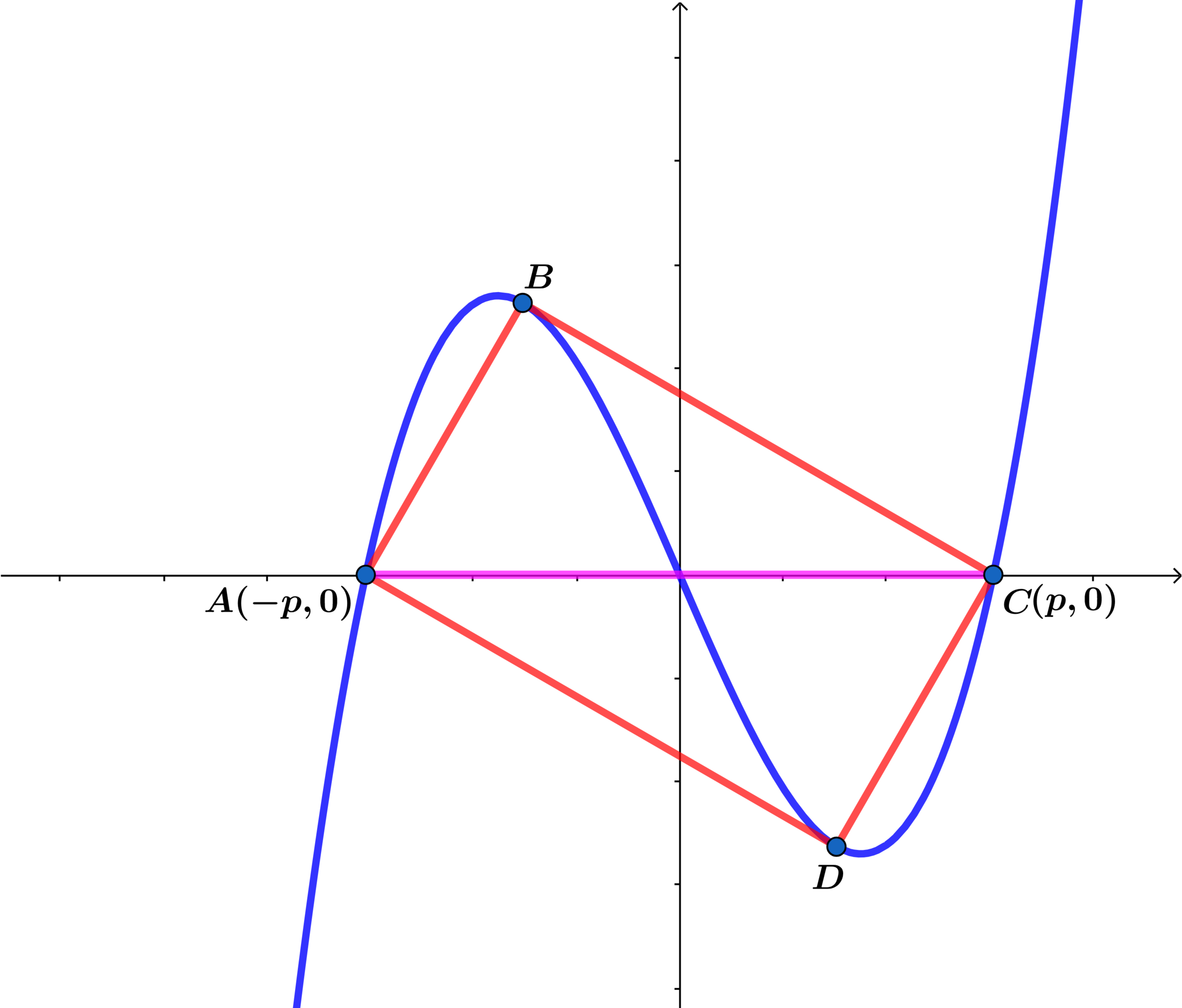Rectangles and Cubics
The problem below is a variation of a brillant problem of the week.

The graph of the cubic function above has has real roots at and and the lines and are tangent to the curve at and respectively.
If the two tangent points and two non-zero -intercepts are joined together to form a rectangle, find the ratio of the longer side to the shorter side to five decimal places.
:
The answer is 1.73205.
This section requires Javascript.
You are seeing this because something didn't load right. We suggest you, (a) try
refreshing the page, (b) enabling javascript if it is disabled on your browser and,
finally, (c)
loading the
non-javascript version of this page
. We're sorry about the hassle.
m ( x ) = x ( x − p ) ( x + p ) = x 3 − p 2 x ⟹ d x d m ∣ x = x 0 = 3 x 0 2 − p 2 = x 0 − p x 0 ( x 0 − p ) ( x 0 + p ) ⟹
3 x 0 2 − p 2 = x 0 + p x 0 ⟹ 2 x 0 2 − p x 0 − p 2 = 0 ⟹ x 0 = p , − 2 p
x 0 = p ⟹ x 0 = − 2 p ⟹ B : ( − 2 p , 8 3 p 3 ) and D : ( 2 p , − 8 3 p 3 ) .
A C = B D = 2 p = 4 p 1 6 + 9 p 4 ⟹ 6 4 = 1 6 + 9 p 4 ⟹ p 4 = 3 1 6 ⟹ p = 4 3 2 .
A B = 8 p 1 6 + 9 p 4 = 4 3 2
and
B C = 8 3 p 1 6 + p 4 = 2 4 3
⟹ A B B C = 3 ≈ 1 . 7 3 2 0 5 .